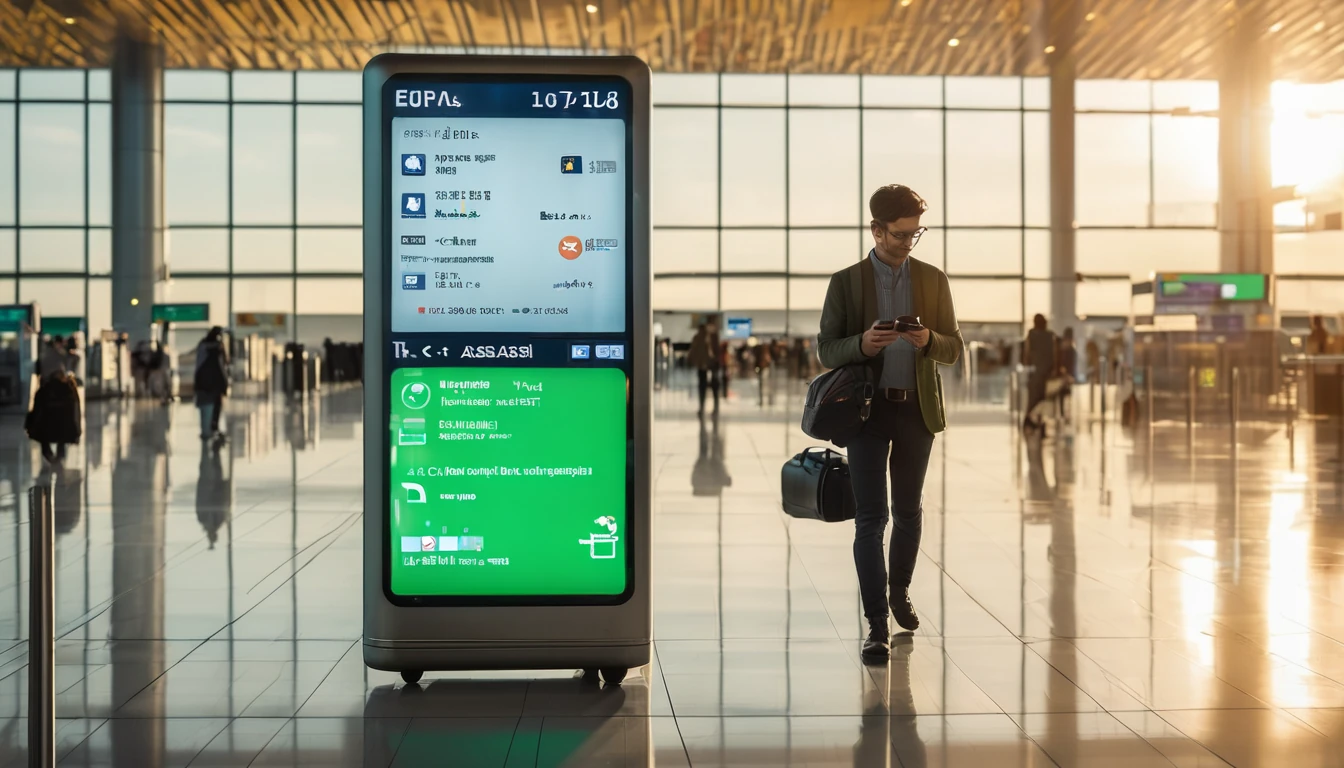If you’re a travel brand, OTA, fintech, airline, or publisher, this telecom co marketing toolkit is your practical blueprint for launching a joint eSIM campaign that travellers actually love. Below you’ll find clear templates for landing pages and ad copy, rock‑solid UTM conventions for clean attribution, and the creative specs to brief your team or agency without back‑and‑forth. We’ve also added real snapshots from partner launches, plus a downloadable asset pack so you can go live fast.
Because travellers come first, everything here is designed to remove friction from discovery to activation. That means localised offers (think Esim United States, Esim France, and regional bundles like Esim Western Europe), transparent pricing, and copy that answers the questions passengers actually ask in‑journey. Use this as your baseline, adapt to your brand, and keep tracking clean so your team can see what’s working from day one. When you’re ready to scale, explore Simology’s partner solutions via For Business and the resources on our Partner Hub.
What this toolkit covers
- Landing page structure and traveller‑first messaging
- Ad copy templates for Search, Social, and CRM
- UTM taxonomy and tracking hygiene (with setup steps)
- Creative specs and file guidance
- Case snapshots and results
- Asset pack download and launch timeline
Build a traveller‑first landing page
A strong landing page does three things: reassures, simplifies, and converts. It’s not a brochure; it’s a decision aid. Start with a single, focussed conversion goal (buy, activate, or learn how eSIM works), and avoid sending travellers elsewhere until they’ve taken that action.
Essential sections (checklist)
- Above‑the‑fold value prop: “Travel data that works on arrival — no SIM swap.”
- Primary CTA: “Get an eSIM” or “Choose your destination.” Secondary “How it works.”
- Social proof: ratings, partner trust marks, concise testimonials.
- Country/region picker with best‑selling packs (e.g., Esim Spain, Esim Italy, Esim North America).
- 3‑step “How it works” with icons: Buy → Scan QR → Connect on landing.
- Clear inclusions: data allowance, validity, tethering, coverage, top‑up.
- Price clarity: local currency where relevant, taxes/fees if applicable.
- Compatibility check: iOS/Android models and dual‑SIM note.
- Support and refunds policy summary; link to full help.
- FAQ drop‑downs (top 5 only to keep it scannable).
Pro tip: Embed a destination smart search tied to our catalogue so travellers can jump straight to Destinations.
Traveller‑first template blocks you can copy
Headline options: - “eSIM for effortless travel data — no queues, no plastic.” - “Land connected in the USA/Europe — install your eSIM before you fly.”
Lead paragraph: - “Skip airport SIM stalls. Buy your eSIM in minutes, install via QR, and connect instantly on arrival. Keep your usual number active for calls while using local data.”
Feature bullets: - “Fast 4G/5G where available” - “Keep your SIM — no swap needed” - “Works in X countries” (adapt per plan) - “Hotspot/tethering supported” - “Secure checkout, instant delivery”
Plan grid microcopy: - “Good for maps and messaging (3–5 days city break)” - “Great for streaming and hotspots (10–14 days+)”
Destinations module: - “Popular now: Esim United States, Esim France, Esim Western Europe”
UX patterns that boost conversion
- Keep plan cards consistent: allowance, validity, price, CTA in the same order.
- Add sticky CTA on mobile.
- Use device‑aware badges: “Works on your iPhone 13” where possible.
- Offer a “First time using eSIM?” link to a simple explainer rather than a long tech page.
Ad copy templates that convert
Your job: speak to the trip and the pain you remove (roaming shock, airport queues, public Wi‑Fi). Keep claims verifiable and concrete.
Paid Search templates
Generic: - H1: “eSIM for Travel — Instant Setup” - H2: “No Roaming Fees | Keep Your Number” - Desc: “Install before you fly. Fast 4G/5G on arrival. Plans for Destinations.”
Destination‑specific: - H1: “USA eSIM — Connect on Landing” - H2: “Local Data | No SIM Swap” - Desc: “Buy online, scan QR, you’re live in minutes. See plans: Esim United States.”
Regional: - H1: “Europe eSIM — One Pack, Many Countries” - H2: “Holiday & Business Travel” - Desc: “Use across top hubs. Explore Esim Western Europe.”
Brand+Partner: - H1: “[Your Brand] x Simology eSIM” - H2: “Exclusive Offer for Travellers” - Desc: “Data plans for US, Europe and more. Start here.”
Social and Display templates
Short primary text: - “Land connected. eSIM delivered instantly.” - “No queues. No roaming bill shock. Just data that works.”
Body copy: - “Choose your destination, buy in minutes, scan the QR, and you’re online on arrival. Popular: Esim Spain, Esim Italy.”
CTAs: - “Get eSIM” - “View Plans” - “Install Before You Fly”
Subject lines (CRM): - “Install your eSIM before you fly” - “Avoid roaming fees on your trip to France” - “One eSIM for your US itinerary”
Pro tips: - Mirror keywords from your landing page H1 for Quality Score alignment. - Use location and trip type: “city break”, “road trip”, “business week”. - Always A/B one message that educates (what is eSIM?) vs. one that assumes awareness.
UTM attribution and tracking hygiene
Clean data wins budget. Use one UTM taxonomy across all channels and partners so your analytics platform tells a single story.
Standard taxonomy (recommended)
- utm_source: partner or platform
- Example: “google”, “facebook”, “ota‑brand”
- utm_medium: channel
- “cpc”, “display”, “email”, “affiliate”
- utm_campaign: offer context
- “esim‑usa‑2025q1”, “esim‑western‑europe‑summer”
- utm_content: creative or placement variant
- “vid‑15s‑stories”, “img‑1080‑citybreak”, “lp‑variant‑a”
- utm_term: paid search keyword (where relevant)
Naming rules: - Lowercase only, hyphens as separators, no spaces, no PII. - Keep to < 50 characters where possible. - Include date or season if you’ll revisit later.
Set‑up steps (How‑To)
1) Create a shared UTM guide - One page listing approved values and examples. - Store it alongside briefs on your internal drive or the Partner Hub.
2) Build links with checks - Use a sheet with data validation or your BI tool’s URL builder. - Force required fields; block free‑text where possible.
3) Map to analytics - In GA4, define channel groupings aligned to utm_medium. - Create campaign naming rules to auto‑group reports.
4) QA before launch - Test each ad link in a clean browser session. - Confirm UTMs persist through any redirects. - Validate final landing URLs resolve correctly.
5) Monitor and tidy - Weekly: flag off‑taxonomy values and correct them at source. - Archive ended campaigns to preserve CTR/CVR baselines.
QA checklist: - Are all links HTTPS and canonicalised? - Are UTMs present on all paid links and CRM CTAs? - Is there a single default landing page per campaign? - Does your order confirmation page pass source/medium to revenue?
Pro tip: If you’re driving to multiple country pages (e.g., Esim France and Esim North America), keep campaign consistent and vary utm_content to identify which destination module was clicked.
Creative specs and file guidance
Brief clearly to avoid rework and keep load times fast.
- Static image (Social/Display)
- 1080×1080, 1080×1350, 1200×628
- PNG/JPG, ≤ 500 KB (aim for 200–300 KB)
- Safe‑area for text: < 20% coverage for readability
- Vertical video (Stories/Reels/TikTok)
- 1080×1920, 9:16, 15–30 s
- MP4/H.264, ≤ 15 MB where possible
- Hook in first 2 seconds; show install flow
- Horizontal video (YouTube/Pre‑roll)
- 1920×1080, 16:9, 15 or 30 s
- Include brand bumper in first/last 1.5 s
- HTML5 display
- 300×250, 728×90, 160×600, 300×600, 320×50
- Under 150 KB per creative
- Landing page assets
- Hero image < 200 KB; lazy‑load non‑critical images
- SVG for logos/icons; system fonts or preloaded web fonts
Copy guardrails: - Avoid vague superlatives; favour concrete benefits (e.g., “Install before you fly”). - Localise price and spelling (US vs UK English when relevant). - Make inclusions/exclusions explicit near the CTA.
Case snapshots
- Airline pre‑departure email
- Audience: USA‑bound leisure travellers
- Tactic: “Add eSIM before you fly” segment + Esim United States landing
- Result: +31% CTR vs generic roaming tips; 22% of clicks installed within 24 hours
- OTA booking confirmation page
- Audience: Weekend city‑breakers
- Tactic: Inline module featuring Esim Spain and Esim Italy
- Result: CVR uplift from 2.4% to 4.1% with localised imagery and prices
- Fintech travel card app
- Audience: Multi‑country travellers
- Tactic: In‑app banner to Esim Western Europe
- Result: 18% attach rate when shown post‑FX notification
- Publisher travel guide
- Audience: France itinerary researchers
- Tactic: Content block linking to Esim France with step‑by‑step install
- Result: Average time on page +42%; strong assisted conversions
Launch in one week: a simple plan
Day 1: Scope and assign - Choose priority destinations via Destinations and set one goal (sales or installs). - Confirm analytics owner and paid media owner.
Day 2: Landing page build - Implement the template blocks above; add country modules. - Set up events and test UTMs.
Day 3: Creative and copy - Produce two image variants and one 15 s vertical video per destination. - Draft search, social, and CRM copy using templates.
Day 4: Tracking and QA - Finalise UTM list, build links, and run full link tests. - Check mobile speed (aim < 2.5 s LCP).
Day 5: Soft launch - Launch in one market (e.g., Esim North America) with 50% budget. - Monitor CTR, CVR, CPI; fix any leaks.
Day 6–7: Scale and optimise - Roll out to additional pages (e.g., Esim United States, Esim France). - A/B headline and hero; shift spend to best‑performing placements.
Download the co‑marketing asset pack
To make this painless, grab the partner asset pack on our Partner Hub. It includes: - Editable landing page blocks (copy + wireframe) - Ad copy bank for Search, Social, CRM - UTM builder spreadsheet with validation - Brand guidelines, logos, and icon set - Creative spec checklist and QA worksheet
If you’re weighing a broader programme, see options on For Business.
FAQ
1) What’s the fastest way to go live? - Start with one destination page (e.g., Esim United States), one search campaign, and one social placement. Use the UTM sheet to keep tracking clean, then scale.
2) Should we drive to a regional or country page? - If the itinerary is fixed, use country pages like Esim France. For multi‑stop trips, regional pages such as Esim Western Europe convert well.
3) How do we explain eSIM to first‑timers without hurting conversion? - Keep it to three steps above the fold and put deeper guidance behind an expandable “How it works.” Avoid technical jargon on the primary path.
4) How many ad variants should we run at launch? - Two image variants, one short video, and two copy angles per channel is enough to find a winner without spreading budget too thin.
5) What metrics matter most in week one? - Landing page CVR, cost per install (or sale), and bounce rate by device. Use UTMs to break down performance by creative and destination.
6) Can we cross‑sell during or after purchase? - Yes. In confirmation pages or post‑purchase emails, promote add‑ons like regional upgrades (e.g., Esim North America) or destination alternatives via Destinations.
Next step: Download the asset pack and start your build on the Partner Hub.




